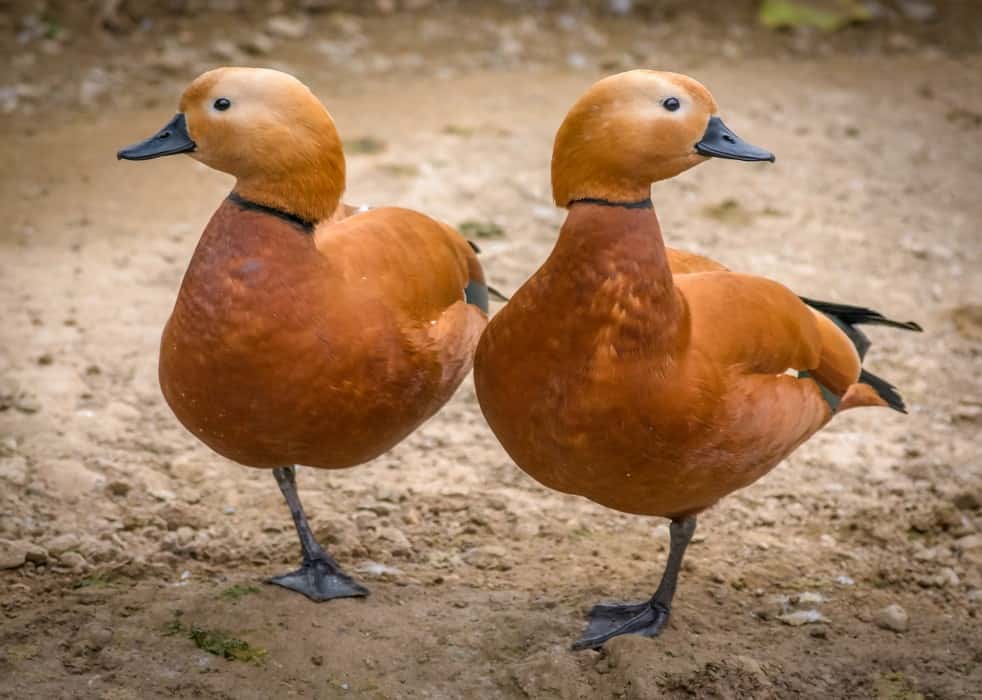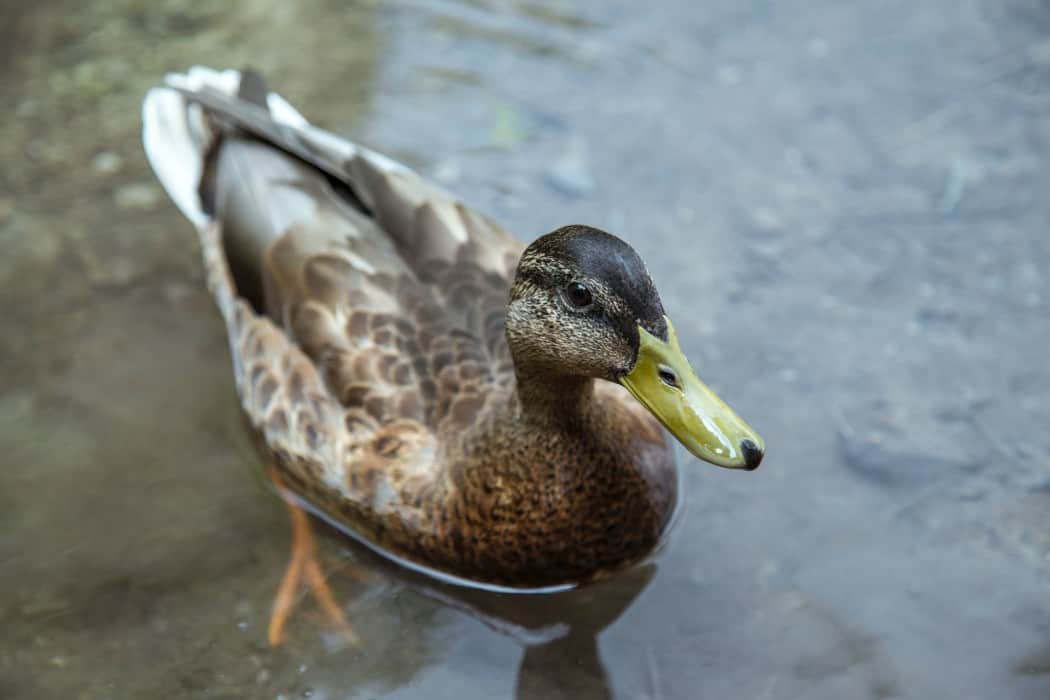
I own a lot of ducks in my village ponds along with other pets too, among them ducks drive me crazy by standing on one leg, why do ducks stand on one leg?
Ducks stand on one leg to feathered chest, feel extra warmth during cold weather. Other factors for ducks to stand on one leg include sleeping, conserve body heat, and resting one leg while standing on another leg.
Table of Contents
Why Do Ducks Stand On One Leg ?
In a chilly climate, ducks stand on one leg to conserve heat. The heart of ducks pumps warmer blood that is at body temperature to the unfeathered legs exposed to the cooler area, causing the warm blood to lose heat energy and turn into cold blood, resulting in heat loss through the unfeathered legs.
so that birds pull or tuck one leg to their feathered chest and balance on one leg to reduce the heat lost through unfeathered legs. It is common for ducks to stand on one foot while they’re resting because birds often get stressed, like animals, and they often rest on one leg so that they appear to balance on one leg while resting on the other leg.
In birds, standing on one leg or unipedal posture can decrease fatigue. The supporting and standing leg is aligned in such a way to prevent falling due to gravity. Standing in one leg places tension on the leg ligaments.
However, these ligaments, are well developed in birds resulting in them standing for a long period of time in unipedal posture thus they can rest one leg while standing on one leg.
Why do Ducks sleep with their Heads Backward? Ducks place their head in shoulder feathers when sleeping to allow the neck muscle to get some rest. However, adaptation also helps them to maintain body heat during winter.
Why Do Birds Sleep With One Foot Up?
Yes, birds typically tend to sleep on one leg while standing because it is an adaptation during cold weather and rest. During the cold wind and climate, sleeping ducks turn their head and position it under the shoulder feathers to prevent heat loss through the head and beak and to relax the muscles of the neck.
In ducks, the sensory balance and receptors such as equilibrium sense organ or labyrinth, a lumbosacral region of the vertebral spine, play an important role in assisting and balancing ducks while standing on one leg and even when sleeping, as they prevent falling due to gravity while there is inactive eye sense organ during sleep.
However, during the ducks are asleep, the sense organs such as the labyrinth and the lumbosacral portion of the vertebral column are involved in balancing the one-legged posture
List of Birds that Stand on one Leg

For different purposes, such as thermoregulation, sleeping, and resting, most birds stand on one leg. The most often found in the one leg position are the following birds.
- Ducks.
- Herons.
- Hawks.
- Geese.
- Robins.
- Flamingos.
- Canada geese.
- Storks and Ducks( while standing on ice on one foot).
Read More : Eagle Vs Hawk ?
9 Interesting Facts about Ducks
- The production of eggs in ducks varies with the variation in sunlight available to them. When more sunlight is available, more eggs than in usual sunlight are observed to be produced by ducks.
- When they are in groups, Ducks feel protected because they are some sort of social animal in their world making quak quak happy noises.
- Ducks are often related to waterfowls because, as they typically tend to live in and near the water such as wetlands, rivers, lakes, and pools.
- The average lifespan for ducks is about 10 to 15 years, but depending on the species, it can vary. The lifetime of mallard ducks, for example, is about 5 to 10 years.
- Most of the ducks are descended from the Muscovy duck or the mallard.
- Ducks will sleep with one eye open, while half of their brain is engaged in watching their environment against external predators while the other half of the brain is closed. However, they will sleep with both eyes close when they feel secure and protected or in a group and even resting their head under their shoulder feathers often.
- Ducks are adapted to cold water and climate so well that, like most birds in the cold climate, ducks experience less or no cold feet because they have a counter-current blood vessel system in their legs so that their feet won’t feel cold. Thus ducks can walk on ice surfaces and can swim in ice water.
- Ducks have different colors of feather making them vivid and beautiful.
- Drakes are ducks with an external phallus, a long tentacle that can extend as long as their body is used for mating. After the mating season, it may fall off or detach and can regrow for the next mating season. The length of the phallus depends on the other competitor drakes in the mating competition.
FAQ:
Why do ducks tuck their beaks in the shoulder? Since beaks do not have feathers like legs, thus beaks are also responsible for heat loss, beaks are also covered under their shoulder feathers for extra warmth. Other causes include sleeping, stretching, and relaxing.
Why do robins stand on one leg? The Robins stand on one leg because In cold weather, to reduce heat loss and to feel extra warm. Other causes include sleeping, stretching, and relaxing.
Why do herons stand on one leg? The Herons stand on one leg because In cold weather, to reduce heat loss and to feel extra warm. Other causes include sleeping, stretching, and relaxing.

